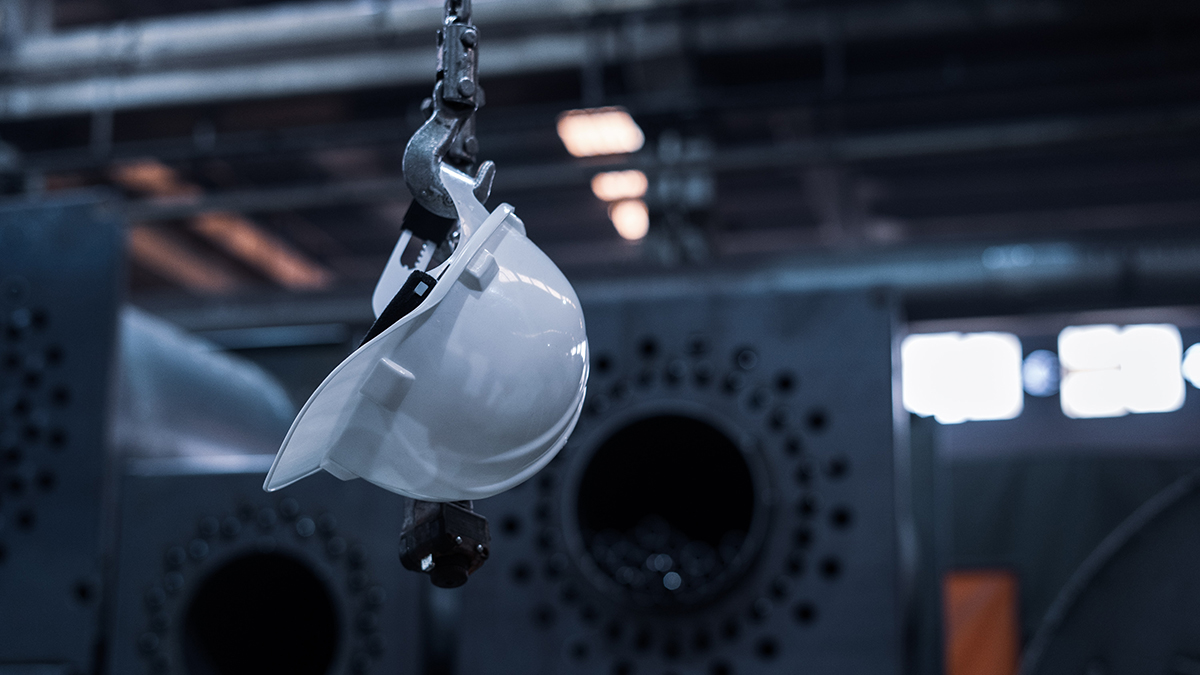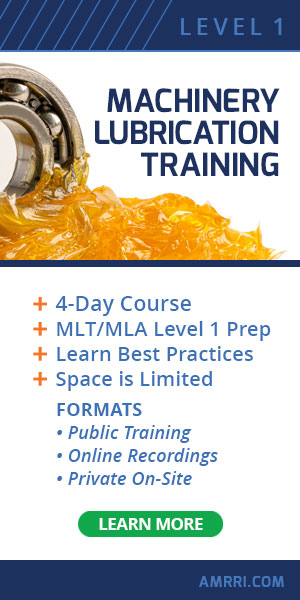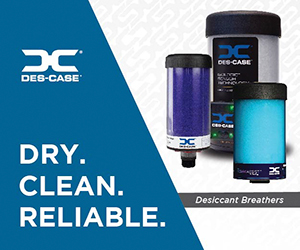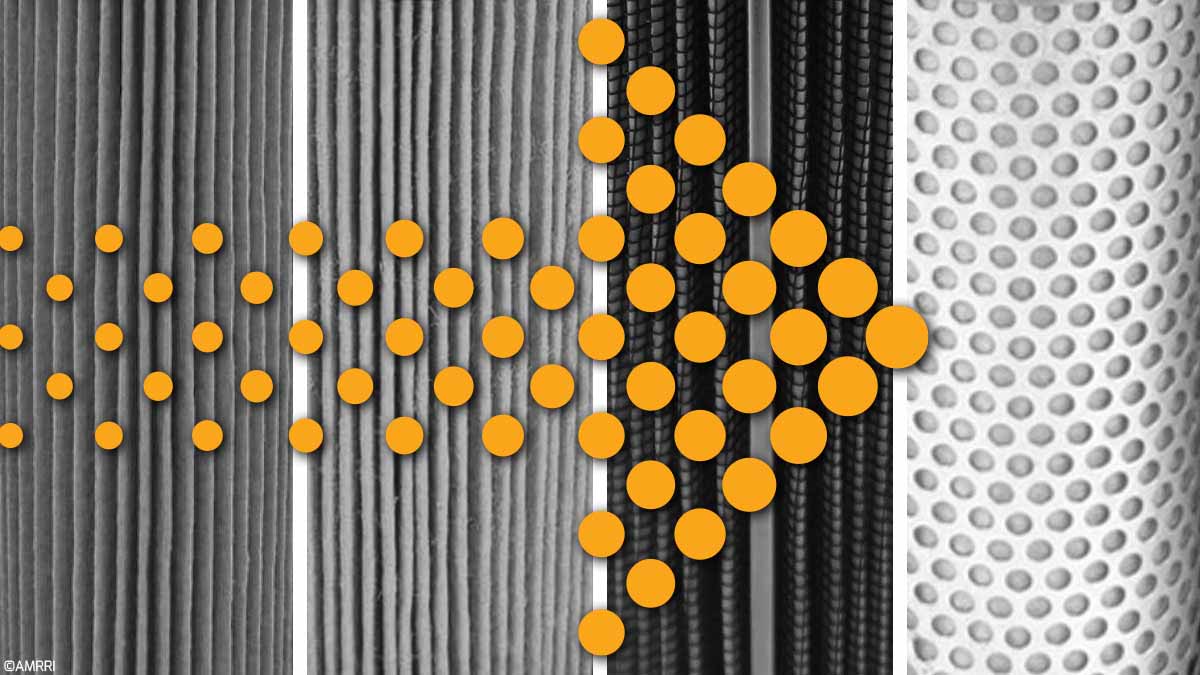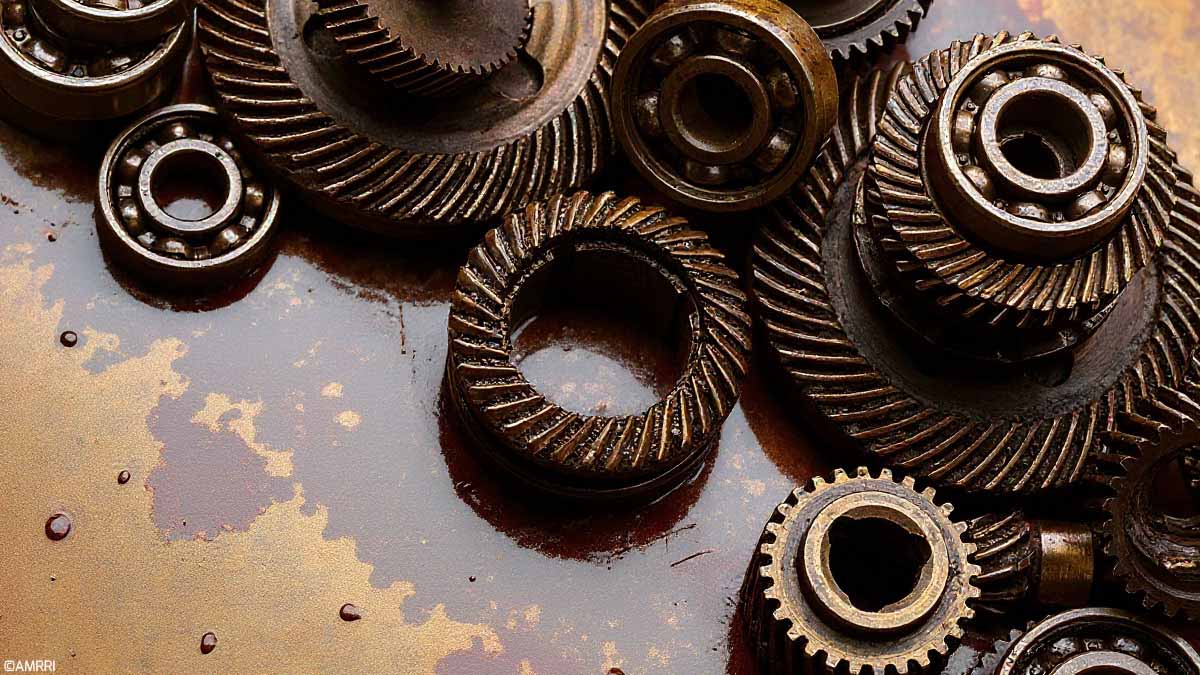My focus is on what and how companies invest in their equipment to drive results. As someone who has worked in maintenance and reliability for more than 40 years, I enjoy learning about what is new. However, the reoccurring mistake in all equipment purchases is the lack of knowledge of how to achieve and sustain the performance of the latest equipment.
The truth is that most companies don’t develop reliability programs with proactive approaches because they believe that new equipment does not need these efforts. This is where they start accruing maintenance debt.
Maintenance Debt
Maintenance debt is like all other types of debt. When you run (spend) the equipment outside the design standards or forego maintenance, it creates accelerated deterioration (debt). You build so much debt that the equipment fails when you do this enough.
If you continue to run the equipment in this manner, you lose the design life you sold to the decision-makers to purchase the equipment. Foregoing maintenance never pays off. The damage caused by this poor business decision will never be repaid and will result in failure and accelerated need to replace the equipment.
By not developing proactive approaches to keep their shiny new toys in reliable condition, they operate the new equipment without regard to its long-term success to make a quick buck.
This makes them look like geniuses and gets them their next job with the next company, but it leaves the company that made this investment with all its promises and a maintenance debt they will never overcome.
Having said this, I have also been a part of the decision-making process of many companies to procure the equipment. The capital processes are extensive and require a significant investment in time and effort. These decisions rely heavily on promises from the original equipment manufacturers (OEM) and misleading information regarding their equipment capabilities.
I have also worked for major equipment manufacturers and know the strategy they used to mislead and misrepresent their products to make the purchase by the company appealing. These promises are on unrealistic throughput/production and reliability. Neither of these is ever realized by the company, and the sad part is the company does not hold its team or the equipment manufacturers accountable.
What’s the Real Problem in Reliability?
The foundational issue that drives this failure today in all industries is the loss of genuinely qualified reliability professionals as part of the senior leadership team. Less than 4% of these leaders have any real-world experience in reliability. This limited experience gives them little knowledge base to achieve the desired results.
There has been a shift from developing senior leaders from within to employing job hoppers.
Job hoppers are short-term employees focusing on making themselves look good rather than on the long-term sustainable success of the organization. This drives reliance on OEM lies and leaves the inexperienced decision maker to make a wrong decision.
Forty years ago, the story was significantly different. The successful companies developed their leadership from within and invested in actual capital expenditures and operations. Qualified professionals led these companies, not venture capital groups, accountants, or lawyers. They did not rely on OEM lies because they possessed the experience to make the right decision. Now Boards of Directors want short-term ideas rather than long-term results and make terrible decisions daily.
They confuse throughput with success and have lost the ability to see what their operations are truly capable of. I cannot tell you how many senior leaders have told me that throughput covers many mistakes. This is true if those leading the company are not knowledgeable and lack the skills of a true leader. This is the predominant leadership style used today and the root cause of underperforming capital projects.
Let us look at what I mean by my statements above. The capital justification process is usually laborious and all about leadership knowledge and experience. The first question should be, what are we trying to achieve? Without question, the answer will be more throughput. That is a convenient answer.
Why Experience Matters in Overcoming OEM Misinformation
The next step is where we start to fail. We specify the necessary equipment based on our needs and the manufacturer’s misleading information. We need the equipment to produce specific tons/hour. The OEM promises their equipment will deliver it. Forty years ago, we knew through experience that the OEM was lying about the equipment’s capabilities.
Any OEM promised production should be discounted by 20%. If you want to achieve the throughput desired, you need to find equipment that the OEM says will deliver 20% more tons/hour. Here is your first opportunity to get it right. We fail to make the right decision because of our lack of experience with the decision-makers and the misleading promises of the OEM.
Another aspect of equipment selection is how well it is designed for reliability and maintainability. The more reliability and maintainability built into the equipment, the less scheduled downtime you need to do these functions.
When I say reliability and maintainability built in, I do not mean the OEM version. The design for reliability and maintainability needs to be done by qualified maintenance and reliability professionals.
OEMs do not possess the qualified personnel or the interest in increasing the reliability of their equipment. OEMs make the bulk of their profits on parts and service sales. Unqualified leaders allow the OEM or inexperienced staff to sell them on unrealistic capabilities.
To prove this, you must look at the OEM manual and its recommended maintenance. They recommend fixed time/usage-based maintenance, which offers no proactive efforts. They recommend gas company lubricants, which could be the least effective and the most important aspect of proactive maintenance.
This is factual evidence that they have no interest in reliability or providing value. I have worked for a few major OEMs. When I suggested providing premium lubricants or any other real reliability or maintainability improvement, I was told that we are in the business of selling parts, services, and new equipment. Reliability hurts our bottom line. Qualified leaders can see through this and possess the experience to see through the lies.
The Dangers of Short-Term Decision Making
Now, look at their recommended spare parts list. It is one or more of everything—proof positive where their allegiance lies. The highest cost to any organization is the loss of opportunity because of equipment downtime.
The short-term “cost to buy” decision to remove the reliability and maintainability capabilities will always cost the organization more than the costs to include it from the beginning.
Additionally, keeping these capabilities will go a long way to limiting the maintenance debt that most organizations begin to incur the day the equipment goes into production. I have watched many companies remove this functionality to reduce the cost of buying.
Senior leaders lacking qualifications fall for this short-term approach emphasizing that leaders without experience and capabilities are at the root of this entire issue. What they need to focus on are costs to use. The reason for this wrong business decision is that we have lost the experience and skills necessary to make these decisions.
In our haste to promote job hoppers and shortcut what leaders are, we employ people that are the perfect example of the “peter principle.” The “peter principle” states that we have promoted the person to their highest level of incompetence.
Again, I cannot tell you how often I hear those terrible business decisions made because of the short-sighted “cost to buy” approach. The reason the value focus on “cost to use” has fallen by the wayside is that companies are lazy and do not want to do the work necessary to make the right decision; the senior leaders making these decisions are not interested in the long-term success of the business. We have lost the senior leaders with the experience to lead and make these decisions. It has given way to job hoppers, not internal development.
Capital Purchases
Now let us continue with the discussion of capital purchases. The decision to produce the required tons/hour needs to be vetted. We must add in any time we need to make the equipment deliver reliable results. We must understand how many hours a year we need to schedule the equipment down to avoid unscheduled downtime.
Again, building in reliability and maintainability reduces the need for additional throughput capabilities. We need to buy equipment that produces at a higher rate to allow for reliability efforts. If, after designing in reliability and maintainability, we see that we need the equalizing time, this will push the production per hour to higher tons/hour.
We know that its maximum throughput is 80% of the OEM promise, so we need to procure equipment with a production rate of more than the required ton/hour. The experience and understanding of equipment are something other than what you get taught in college or a seminar or sitting behind a desk with a title.
There is no quick fix or shortcut to this knowledge. Never trust the OEM to represent their product honestly. I can tell you that forty years ago, senior leaders who were developed within the company and qualified to do their jobs delivered what they said. They did not have to hide behind throughput or smoke and mirrors.
Let us take a moment to reflect on your day-to-day life. If your organization did make the necessary adjustment to throughput, instead of allowing this adjustment to be used for reliability and the organization’s long-term success, it would just use the additional capability to cover operational/leadership mistakes.
They will push the equipment to its limits and justify it because production is king. This approach is the death of our industrial might. It is the rallying cry of the unqualified leader and at the root of the end of our competitive advantage.
Since capital is the start of the competitive advantage available to us if realized, how we operate our equipment is the sustainable part of the equation.
In industry, the price point of the commodity sold is fixed for companies. The only competitive advantage available to these companies is the cost reduction to allow for the most significant profit margins. How do we reduce costs effectively and in a sustainable manner? Many organizations look for quick reductions that result in long-term damage.
The biggest mistake that comes to mind is the reduction in the workforce. While reducing the workforce is a quick and easy solution, it is always a long-term disaster. This poor solution results from senior leadership teams needing more leadership skills and experience to lead an organization into the next century.
Let us look at a sustainable approach to reducing our costs and thus leveraging the most significant competitive advantage available to all organizations. Qualified senior leaders know that a 10% reduction in maintenance costs is the bottom-line equivalent to a 40% increase in throughput.
We know that achieving a 40% increase in throughput would require significant investment, including building new facilities and staffing this facility. This is usually cost-prohibitive for most organizations.
Often unqualified senior leaders focus on the 10% reduction in maintenance costs. However, they do this arbitrarily and without experience and knowledge of what this type of reduction means—cutting the annual spend by 10% with no thought other than the cuts will always result in higher costs to the organization in downtime and subsequent repairs.
It costs 90% less to proactively stop the failure than it does to repair.
Because of the loss of qualified maintenance and reliability leaders, senior leadership is caught off guard by these increased costs. Many organizations hide these costs in other areas to prevent the board from realizing that their poor leadership has damaged the organization.
How do we reduce the maintenance costs by 10% with actions designed to sustain the reduction and profit of the organization? The answer is with truly qualified maintenance and reliability leaders. These leaders are almost extinct.
They are being replaced with college degrees or unqualified job hoppers who may have held a title but possess no fundamental skills or experience or “jacks of all trades” (and masters in none) over the past 30 years.
The trend today among unqualified maintenance and reliability managers is to implement a wide array of technology to distract from their lack of leadership skills and experience. These shiny toys and fancy tech mislead the organization into thinking they are being proactive.
The fact is that no technology will make you more reliable. Technology cannot and will not make your organization more reliable. If you have a reliability and maintenance leader recommending tech as an answer, you now know they are not true leaders in reliability but the reason your company is failing.
What is Reliability to Your Organization?
The definition of reliability is the quality or state of being reliable. It is the extent to which an experiment, test, or measuring procedure yields the same results on repeated trials. Reliability is achieving the equipment’s optimum reference state. In short, the optimum reference state is the prescribed state of machine configuration, operating conditions, and maintenance activities required to achieve and sustain specific reliability operations.
To qualified maintenance and reliability professionals and leaders, this means taking the actions necessary to achieve equipment design life. Anything less than that is a failure. Maintenance and reliability leaders/professionals know their job is to achieve equipment design life, not employ technology to monitor its death.
Scheduling Downtime to Avoid Unscheduled Downtime
If your company believes scheduling downtime is reliable, you are not qualified. Scheduling downtime based on vibration, thermography, or other tech is a failure and the approach of an unqualified leader or consultant.
These unqualified pretenders boast that they can monitor equipment using vibration, thermography, ultrasonics, etc., and schedule the replacement before failure. They call this proactive maintenance because they avoid unscheduled downtime.
This approach costs the organization 90% more than stopping the failures. No maintenance and reliability experience or skill is required to monitor your equipment’s death. Often the operation suffers unscheduled downtime because of the 75% – 89% variable.
Why is the breakdown 75% – 89% variable? It is because the technology cannot know how well the component it is monitoring has been cared for. It needs to be cared for properly, or it will not fail.
Technology does not know if the component was professionally installed, kept contamination free, and properly lubricated. These are the top three reasons components fail.
Reliability can only be accomplished by stopping failures. This is where a qualified senior leader makes a difference, especially an experienced maintenance and reliability leader. These leaders know this and how to accomplish it.
Qualified senior leaders know what true proactive maintenance is. Proactive maintenance is creating or controlling a situation by causing something to happen rather than responding to it after it has happened.
The fact is that technology requires a failure, and all you are doing is responding, so by definition, condition monitoring/predictive maintenance and preventive/fixed time maintenance are reactive and respond to failure after it has happened.
Proactive maintenance includes proper lubrication, contamination control, and proper installation. These are the proactive maintenance activities. It is simple but requires an expert in maintenance and reliability to lead these efforts.
Only through years of skilled trade experience and education can someone achieve this level of expertise. No shortcut, college degree, seminar, abbreviated academic program, etc., can equal the time and effort required to lead maintenance and reliability.
The industry is in the crisis we are in now because unqualified senior leaders attempt to shortcut these requirements and then falsely promote success.
I challenge any organization that feels it has a proactive reliability approach to answer a few quick questions:
- How long do most of your bearings last?
- How often do most of your motors last?
- How long do most of your gearboxes last?
If the truthful answer to all three of the above questions is not 25 years, then you need a proactive reliability approach. Does your lubricant come from a gas company? If it does, you need a reliability approach.
Remember, the job of a qualified maintenance and reliability leader is to stop failures. It is to achieve equipment design life, not monitor its death using one of the fancy technologies today. The only way to accomplish this is through proper lubrication, contamination control, and installation. 98.8% of all failures fall into these areas.
No technology or computer program will ever make a difference in these areas. Only qualified maintenance and reliability professionals with knowledge and experience in these areas will stop the failures.
The development of qualified reliability and maintenance professionals stopped in the 1980s. It was replaced with a multi-craft handyman or worse. If your company does not have an apprenticeship program led by real journeyman tradespeople, you cannot and will not have reliability. If you shortcut this program with titles or community college crap, you cannot have reliability.
While there is a lot of excitement in purchasing new equipment and using fancy technology to monitor it, as senior leaders, we are not doing our job if this is our approach.
Buying new equipment without understanding its functionality and reliability is irresponsible. Using technology and touting it as reliability is irresponsible. Hiding mistakes by short-term throughput is reckless.
Senior Leadership Responsibilities
Senior leaders need to do challenging work to achieve sustainable, reliable operations. If you need to know what that work is, find someone to help you figure it out. I will tell you to beware of consultants. Ninety-eight percent of consultants today are part of the problem rather than the solution. They are desktop engineers without qualifications or any real-world experience.
Do not accept inferior qualifications from hacks, wannabes, or those that think they hit a triple because they were born on third base. You will be replacing unqualified senior leaders with an unqualified external resource. Stop hiring them based on their hype and interview them as if they were new hires.
As a senior leader, it is your job to hear what they are saying as they manipulate you to what they offer, not what you need. Remember, no two operations are alike. Supposed success at other locations does not equate to your site or success. Most of these success stories are just that, stories. If it sounds too good, it is.
Senior leaders must challenge these fake professionals to prove their claims. Consultants cover up their failures with broad motherly statements that do not answer your questions. False reliability claims are perfect examples of the opinion that figures never lie, but liars can figure.
Please do not fall prey to them and work to identify qualified, skilled trade reliability professionals. As a senior leader in your organization, you must look for someone who has run a plant, has a skilled trades background, and has been on-site at 3 AM turning wrenches to get the plant back up. This is where you will find your bang for your buck.
Buying new equipment is not the savior of your organization. Buying the right equipment and maintaining it in its optimum reference state is. Senior leaders must invest in a resource with the knowledge, trade skills, and experience to achieve this.
Any organization can buy equipment and trust the OEM to represent their product correctly. If long-term success is the organization’s goal, there must be much more work. Never trust the OEM, and never make new equipment decisions on buying costs. As a senior leader, it is always your job to keep your eye on the long-term success of your organization. It is never about you; it is about the facility.
Stop making bad decisions because you are afraid to admit you do not have the knowledge or experience necessary in this area. Find a qualified maintenance and reliability professional with hands-on experience. I will leave you with this quote from my father, “You do not have to be the smartest person in the room, but make sure to surround yourself with them.”



